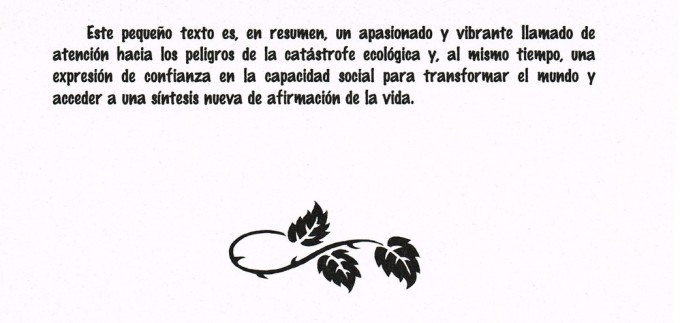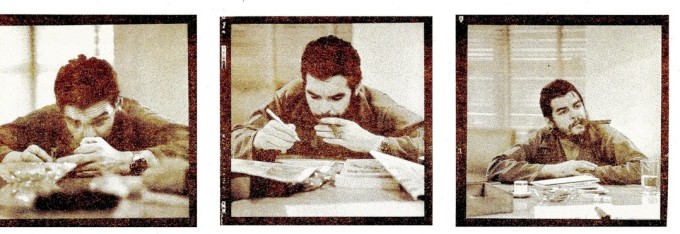
The documents collected by the late Mario Payeras were given to the CAMeNA in two batches. One part of the collection was stored in digital format on a pen drive which Payeras had brought with him from Guatemala. His partner Yolanda Colom gave this pen drive to the CAMeNA after Payeras had passed away. The second batch of documents were given to the CAMeNA staff on a separate occasion, on paper. The documents encompass two areas which nurtured each other in Payeras’ life and works: the poetic, and the insurgent analysis of military strategies of counter-insurgency warfare. Payeras was a writer of all genres who received the prestigious literary prize Casa de las Americas in 1981 for his testimonial novel Los días de la selva, about the life of a guerrilla group in the jungle. This novel is complemented by his later novel El trueno en la ciudad, on guerrilla activity in the city. Payeras also published a play, short stories for adults and children, poetry, a testimonial, essays on environmental themes, and a volume with essays on military-strategic analysis. As well as a writer he was, for 16 years, a key military analyst, strategist and educator for the Guatemala guerrilla group Ejército Guerrillero de los Pobres (EGP). He advocated a profound re-consideration of Marxist analysis in light of its relationship with the eco-system, which he articulated in his book La latitud de la flor y el granizo (1988).
Payeras was born in Chimaltenango in Guatemala in 1940. He studied Philosophy at the University of San Carlos, at the UNAM in Mexico City and, through a scholarship offered by the Guatemalan Workers Party, for four years at the University of Leipzig, where he arrived via Romania. His first-hand knowledge of these Eastern Bloc states led to a critical attitude towards their power structures and their cultures. During his time in Europe he learned Romanian, Italian, and German. After his return to Guatemala, Payeras became one of the founders of the EGP in 1968. He was a member of their National Command and responsible for the analytical and military training of the membership. In 1982, General Efraín Ríos Montt took power by way of a coup d´état. Under his orders counterinsurgency strategies that targeted the civilian population were implemented, and a wave of genocide and repression unleashed. Payeras argued that the EGP’s strategy had failed in this context, and he proposed a profound change. The General Command refused to accept his analysis, and Payeras left the EGP in 1984. He founded a new armed movement and eventually crossed the border to Mexico where he lived in exile and at times, in hiding, until his death.
Payeras, like Ernesto Guevara, saw the urgent need for a body of insurgent military and strategic analysis that would enable guerrilla forces to effectively stop the machine of the – almost always, U.S. sponsored and trained – armies that throttled any attempt at a non-capitalist social and political transformation in the spirit of social justice. Payeras studied and analysed the military strategies of insurgent and counter-insurgent movements to learn from them. He wrote an analysis of the military principles of Simón Bolívar, available under the rubric ‘Historia y cronologia’ I AL1). Under the rubric ‘Partidos y movimientos políticos democracia y elecciones’ there are copies of the document detailing the EGP’s criteria for ideological training, under M GT 3, and under M GT4 a typewritten manuscript of educational talks he gave for the EPG. Some documents are about non-armed social and political struggles in Guatemala, such as political parties like the workers’ party, whose programme for a popular revolution is available under M GT2. Papers collected under the rubric ‘movimientos sociales’ include information about strikes, labour struggles, and trade union organization in Guatemala
The second major theme in the collection Payeras is biographical material such as a detailed list of life events and his literary work, collected mostly under the rubric ‘Expresiones y manifestaciones culturales’. The documents include texts of his works, reviews, interviews, and correspondence. Literary analysts of Los días de la selva have pointed out that Payeras’ work is somewhat unusual in the context of the testimonial and theoretical writing of guerrilla members at the time. Payeras tacitly rewrites some of the tropes of guerrilla literature which continue in the tradition started by el Che; for example, Juan Duchesne, Marc Zimmerman and Stephen Henighan all point out that Payeras does not uncritically embrace the idea of sacrifice and self-sacrifice that is dominant in the writing and the life of el Che, and that he tacitly rewrites it. Some of the themes, the type of metaphoricity and some specific metaphors that Payeras deploys in his jungle narrative resonate with the later writings of Subcomandante Insurgente Marcos and in EZLN communiqués.
The materials available on La latitud de la flor show just how deeply alarmed Payeras was about the deteriorating relationship between the human being and the natural world, and that the reflection on how to re-attune humans with nature was to him essential to a Marxist analysis. Among these materials is a talk by Yolanda Colom on Payeras’ reflections in La latitud.
Finally, the collection contains biographically relevant newspaper clippings and testimonies about the desecration of Payeras’ grave. Payeras died in Mexico in January of 1996. He was buried together with the guerrilla commander Marco Antonio Yon Sosa in Tuxtla Gutiérrez in Chiapas. Shortly after, his remains were stolen and have not been found since. A collection of newspaper clippings on the profanation of his grave is available under the rubric ‘ Expresiones y manifestaciones culturales’ E GT24, with other materials on his life.
It is generally assumed that the removal of his remains was intended as a desecration of his grave, as the remains of the other persons who are buried with him were untouched.
His collection is of interest to all those who wish to research guerrilla literature, the life and times of Mario Payeras, or the military and political histories and the military strategies of counterinsurgent forces and of insurgent movements in Guatemala.
References
Duchesne, Juan. “Las narrationes guerrilleras: Configuracion de un sujeto epico de nuevo tipo,” in Rene Jara and Hemrn Vidal (eds.), Testimonio y literature. Minneapolis, MN: Institute for the Study of Ideologies and Literature (1986), pp. 85 – 137
Henighan, Stephen. “No History to Absolve Them: Spanish-American Revolutionary Discourse after 1990.” Bulletin of Hispanic Studies 81, no. 4 (2004): 511-20.
Zimmerman, Marc. “Testimonio in Guatemala: Payeras, Rigoberta, and Beyond.” Latin American Perspectives 18, no. 4 (1991): 22-47.
By Dr. Cornelia Gräbner
The research on which this post is based was funded by The Leverhulme Trust Fellowship on ‘Acquiescent Imaginaries: Snapshots from the Cultures of Low-Intensity Democracies ’. Cornelia Gräbner would like to thank the staff at the CAMeNA for their generous collaboration and support.


